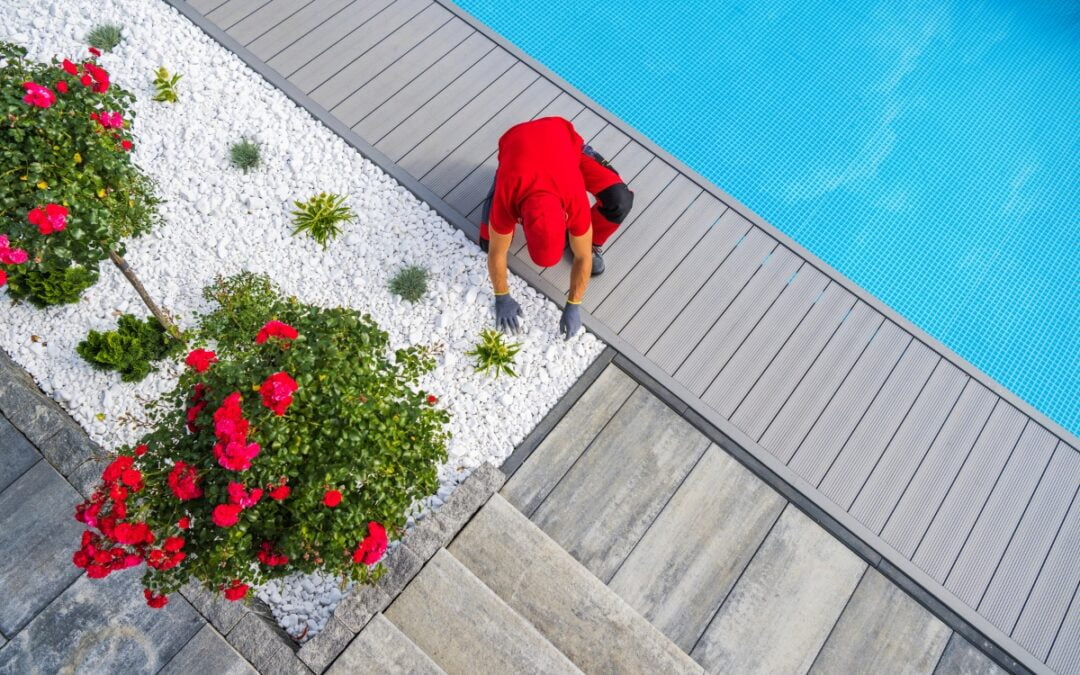Transforming your pool area into a lush paradise is not just about the sparkling water and comfortable lounging spaces; it’s also about creating a vibrant and inviting ambiance with poolside gardening.
Whether you have a small backyard pool or a sprawling oasis, incorporating plants and landscaping elements can elevate the aesthetics and atmosphere of your outdoor space. In this guide, we’ll explore the art of poolside gardening, offering tips, plant suggestions, and design ideas to help you create a verdant sanctuary around your pool.
From selecting the right plants that thrive in the unique poolside environment to incorporating hardscaping features and water-friendly landscaping, get ready to embark on a journey of transforming your pool area into a botanical retreat where relaxation and natural beauty intertwine seamlessly.
Transform Your Poolside: Discover the Secrets of Stunning Poolside Gardening
Selecting the Perfect Poolside Plants
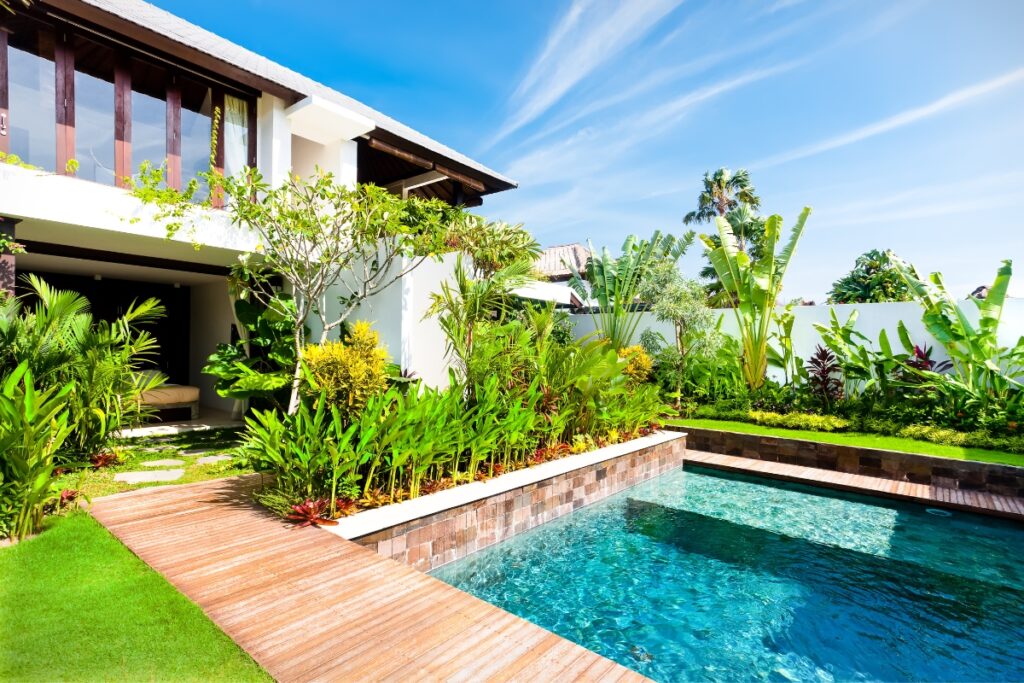
When it comes to poolside gardening, selecting the perfect poolside plants is crucial to transforming your pool area into a lush paradise. The right plants can enhance the aesthetics, provide shade, and create a relaxing ambiance. Let’s explore some key factors to consider when choosing the ideal poolside plants.
- Sunlight Requirements: Before choosing poolside plants, consider the sunlight conditions in your pool area. Opt for sun-loving plants such as hibiscus, bougainvillea, or agapanthus for areas that receive ample sunlight. If your pool area is shaded, ferns, hostas, or caladiums can thrive in low light conditions.
- Water Tolerance: Since poolside plants are often exposed to splashes of water, select plants that can tolerate moisture. Plants like elephant ear, canna lily, or papyrus are excellent choices for their ability to thrive in moist environments.
- Non-Invasive Roots: To avoid any damage to your pool structure, opt for plants with non-invasive root systems. Consider planting palms, ornamental grasses, or succulents that have shallow root systems and are less likely to cause issues.
- Evergreen vs. Deciduous: Decide whether you prefer evergreen plants that provide year-round greenery or deciduous plants that shed leaves seasonally. Evergreens like boxwood or yucca offer continuous foliage, while deciduous plants like Japanese maple or crepe myrtle provide seasonal interest.
- Fragrance and Allergies: Take into account any fragrance preferences or allergy concerns when selecting poolside plants. Fragrant plants such as lavender or jasmine can enhance the sensory experience, while non-allergenic options like salvia or ornamental grasses are suitable for allergy-sensitive individuals.
- Maintenance Level: Consider the maintenance requirements of the plants to ensure easy upkeep of your poolside garden. Opt for low-maintenance plants like succulents, ornamental grasses, or agave for a hassle-free gardening experience.
By carefully selecting poolside plants that align with these factors, you can create a vibrant and inviting oasis around your pool. Whether you aim to add color, texture, or functionality, the right plants can elevate your pool area into a tranquil paradise for relaxation and enjoyment.
Understanding the Microclimate of a Pool Area
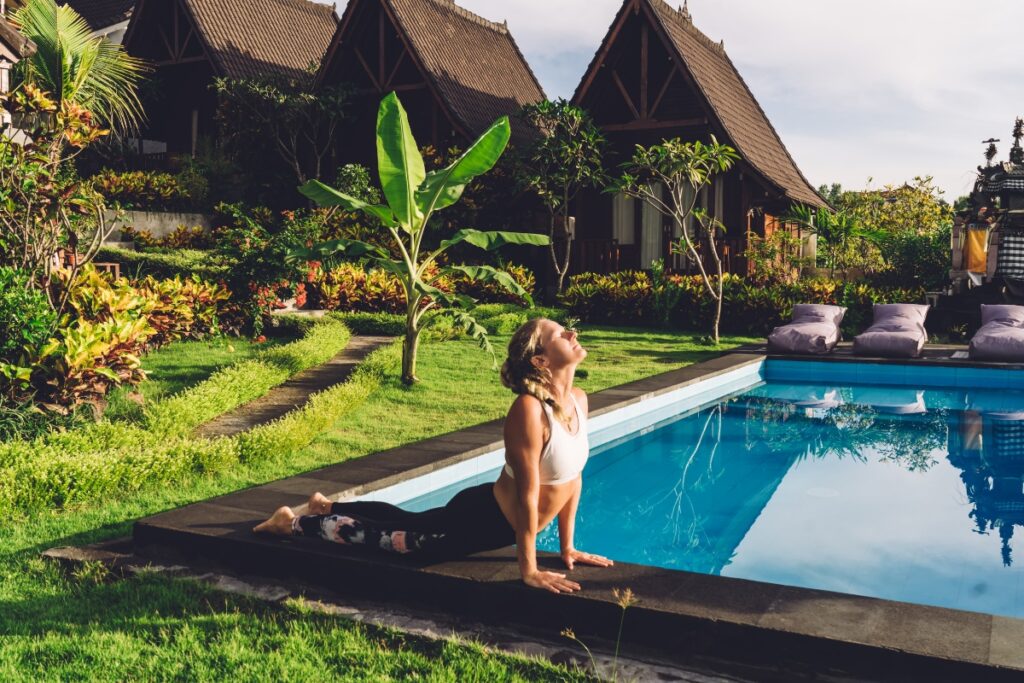
To truly transform your pool area into a lush paradise through poolside gardening, it’s crucial to have a thorough understanding of the microclimate specific to this space. The microclimate of a pool area refers to the unique climate conditions that exist in this particular environment, influenced by factors such as sunlight exposure, wind patterns, humidity levels, and heat reflection from surrounding surfaces.
- Sunlight Exposure: One key factor in the microclimate of a pool area is sunlight exposure. The amount of sunlight your pool area receives can vary throughout the day and season, impacting the types of plants that will thrive in this space. Understanding the sun patterns can help you strategically place sun-loving plants in sunny spots while opting for shade-tolerant varieties in areas that receive less sunlight.
- Wind Patterns: Wind can play a significant role in the microclimate of your pool area. Strong winds can not only affect the growth and health of plants but also contribute to water evaporation from the pool surface. By strategically planting windbreaks such as tall shrubs or trees, you can create a more sheltered environment that protects delicate plants and minimizes water loss.
- Humidity Levels: The presence of a pool can influence the humidity levels in the surrounding area. Higher humidity levels near the pool can create a more tropical microclimate, ideal for moisture-loving plants like ferns and palms. Conversely, if your pool area experiences low humidity levels, you may need to choose plants that are more drought-resistant and can thrive in drier conditions.
- Heat Reflection: The materials surrounding your pool, such as concrete, tiles, or decking, can impact the microclimate through heat reflection. Some surfaces absorb and retain heat, affecting the temperature of the surrounding area. Choosing plants that can withstand heat and reflectivity is essential for creating a thriving garden oasis around your pool.
By understanding the microclimate of your pool area and considering factors like sunlight exposure, wind patterns, humidity levels, and heat reflection, you can create a poolside garden that flourishes year-round. With careful planning and plant selection tailored to the specific conditions of this space, you can transform your pool area into a verdant paradise that enhances the beauty and tranquility of your outdoor living space.
Designing for Aesthetics and Functionality
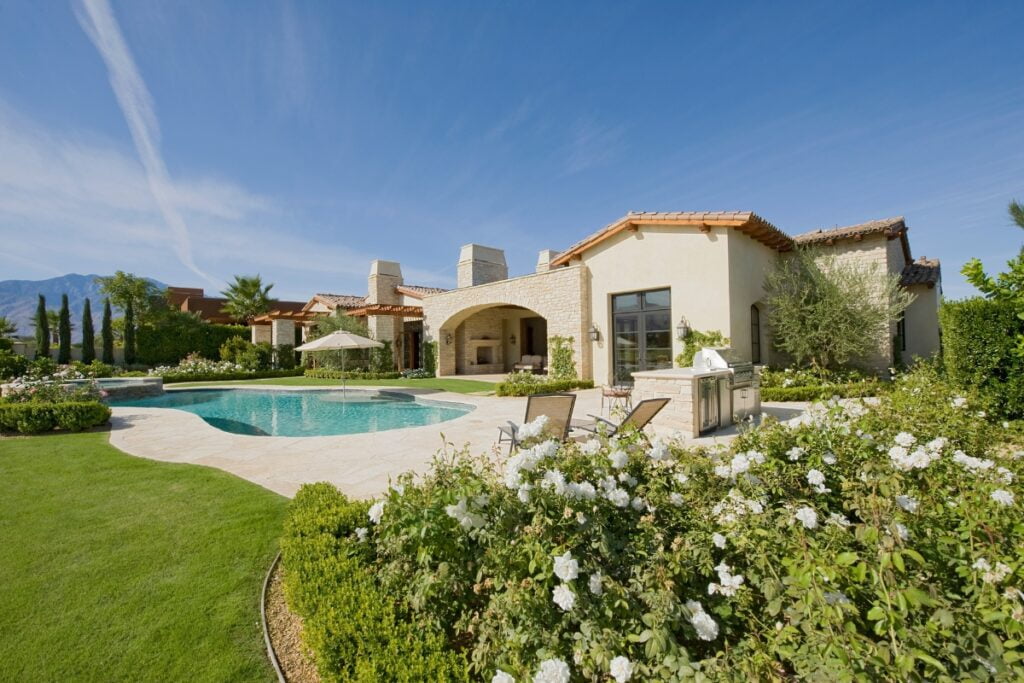
Designing a poolside garden involves striking a balance between aesthetics and functionality. Here are some tips to create a visually appealing and practical outdoor space:
- Create Zones: Divide your pool area into different zones, such as lounging areas, dining spaces, and pathways. This will help you plan the placement of plants and hardscaping elements more effectively.
- Use Containers: Incorporate potted plants to add height, color, and texture to your poolside garden. Containers also provide flexibility as you can easily move them around or change the plant selection as desired.
- Consider Privacy: Depending on your preferences and surroundings, you may want to incorporate plants that offer privacy from neighboring properties or create a sense of enclosure around your pool area.
- Opt for Slip-Resistant Surfaces: When choosing hardscaping materials for pathways or pool surrounds, prioritize slip-resistant surfaces to ensure safety when walking barefoot.
- Lighting: Extend the usability of your pool area into the evening by incorporating lighting features. Choose soft, ambient lighting for a relaxing atmosphere or opt for functional lighting near pathways and seating areas.
A well-designed poolside garden should not only enhance the beauty of your outdoor space but also provide practicality and comfort for you and your guests.
Incorporating Water Features for a Tranquil Oasis
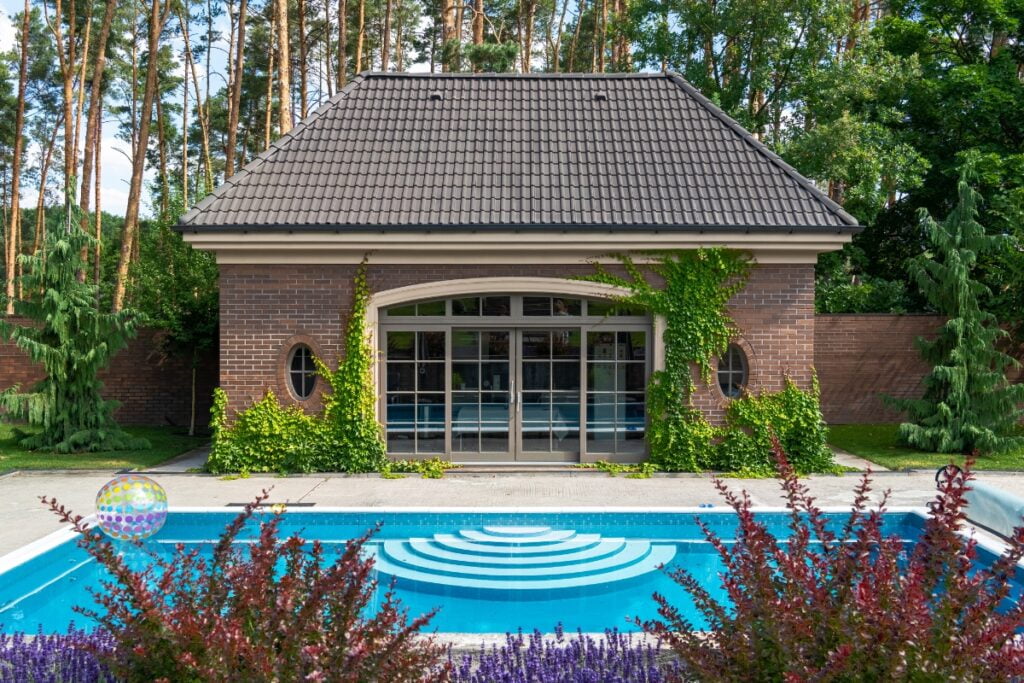
Transforming your pool area into a lush paradise involves more than just adding plants; it’s about creating a serene oasis that invites relaxation and rejuvenation. One of the key elements to achieve this is by incorporating water features strategically. Water features not only enhance the aesthetics of your poolside garden but also contribute to a calming atmosphere that soothes the senses.
When it comes to poolside gardening, water features play a significant role in elevating the overall ambiance. A well-placed fountain or waterfall can add a soothing soundtrack to your outdoor space, masking unwanted noise and creating a peaceful environment for you to unwind. The gentle sound of water cascading can help drown out the sounds of the city, providing a tranquil retreat right in your backyard.
Incorporating a pond or a small water garden can also enhance the visual appeal of your pool area. The sight of colorful fish swimming gracefully or water lilies floating serenely can create a sense of harmony and balance in your garden oasis. These water features not only attract wildlife but also add a touch of elegance to your outdoor space, making it a perfect spot for relaxation and contemplation.
Moreover, water features have a practical aspect as well. They help to cool the surrounding air, making your poolside garden a more comfortable place to spend time during hot summer days. The evaporation from water features can also help regulate the temperature, creating a microclimate that is both refreshing and invigorating.
Maintenance Tips for Poolside Gardens
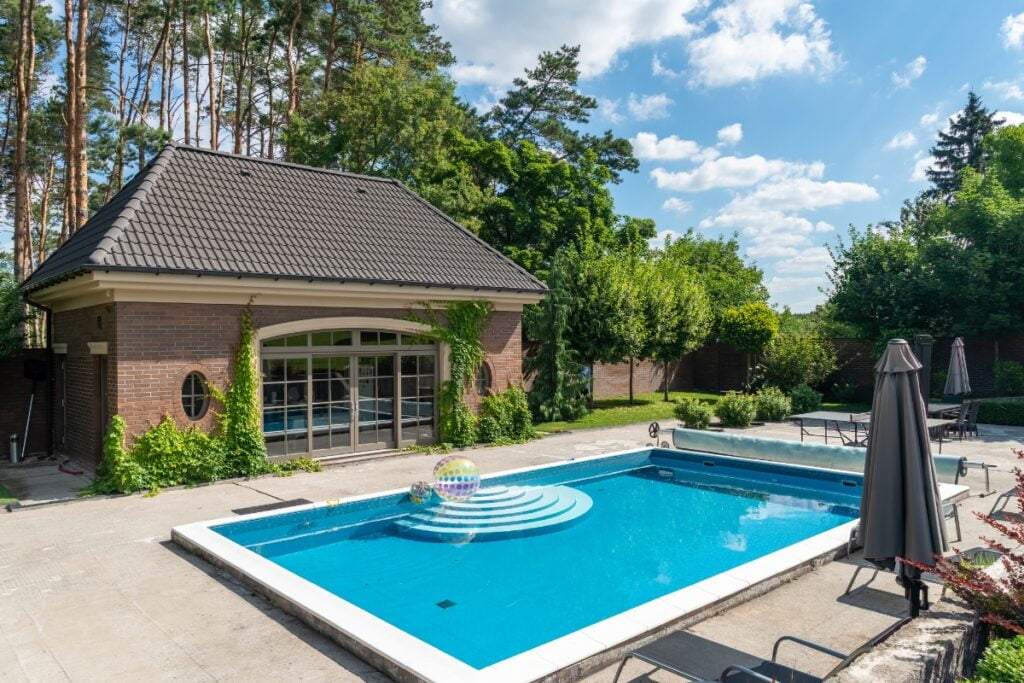
When it comes to maintaining poolside gardens, a few essential tips can ensure that your outdoor oasis stays vibrant and inviting throughout the seasons.
- Choose the Right Plants: Selecting the right plants for your poolside garden is crucial for its maintenance. Opt for low-maintenance plants that can withstand splashes of chlorine water. Consider using tropical plants like hibiscus, palm trees, or bird of paradise for a lush and exotic feel.
- Proper Irrigation: Proper watering is key to keeping your poolside garden thriving. Ensure your plants receive adequate water without creating water runoff into the pool. Consider installing a drip irrigation system to provide consistent moisture to your plants.
- Prune Regularly: Regular pruning not only keeps your poolside garden looking neat and tidy but also helps promote healthy growth. Trim overgrown branches and dead foliage to prevent them from falling into the pool and clogging the filters.
- Mulch for Moisture Retention: Mulching around plants helps retain moisture in the soil, reduces evaporation, and suppresses weed growth. Use organic mulch like wood chips or bark to enhance the soil quality and add a polished look to your garden.
- Monitor Pool Chemicals: Be mindful of the pool chemicals you use, as some may have adverse effects on your plants. Avoid overspray of chlorine or other chemicals onto your garden to prevent leaf burn or plant damage.
- Regular Cleaning: Regularly remove debris such as fallen leaves, flowers, or twigs from the poolside garden area. Not only does this enhance the aesthetic appeal, but it also prevents clogging of drains and filters.
- Fertilize Wisely: Provide your plants with essential nutrients by fertilizing them regularly. Choose a balanced fertilizer suitable for poolside plants and follow the recommended application instructions to avoid over-fertilization.
- Control Pests: Keep an eye out for pests that may damage your poolside plants. Consider natural pest control methods such as neem oil or introducing beneficial insects to maintain a healthy garden ecosystem.
Incorporating these maintenance tips into your poolside gardening routine will not only keep your outdoor space looking beautiful but also create a serene and relaxing atmosphere for you to enjoy.
Balancing Hardscaping and Softscaping Elements

When it comes to poolside gardening, achieving a harmonious balance between hardscaping and softscaping elements is key to transforming your pool area into a lush paradise.
Incorporating hardscaping elements such as stone pathways, wooden decks, or pergolas can provide structure and definition to the space. These features not only enhance the aesthetic appeal but also create functional areas for lounging, dining, or hosting gatherings by the pool.
Complementing the hardscaping with softscaping elements like vibrant flowers, lush greenery, and ornamental grasses adds a touch of natural beauty and softness to the landscape. Strategic placement of plants around the pool area can soften the hard edges, blur boundaries, and create a more inviting and relaxing environment.
To strike the perfect balance, consider integrating water features like fountains or waterfalls that seamlessly blend with the surrounding greenery. The sound of flowing water not only adds a sense of tranquility but also enhances the overall ambiance of your poolside oasis.
Furthermore, incorporating outdoor lighting into your poolside garden design can extend the usability of the space into the evening hours. Soft ambient lighting along pathways, accent lighting for trees and plants, or overhead string lights can create a magical atmosphere, perfect for nighttime entertaining or unwinding by the pool.
Remember to choose plants that are suitable for the poolside environment, considering factors like sun exposure, humidity levels, and the potential for splashing water. Drought-resistant plants, tropical species, or fragrant flowers can elevate the visual appeal of your poolside garden while requiring minimal maintenance.
By carefully balancing hardscaping and softscaping elements, you can create a cohesive and inviting outdoor space that seamlessly integrates with your pool area, turning it into a lush paradise where you can relax, entertain, and enjoy the beauty of nature right in your backyard.
Seasonal Considerations and Plant Care
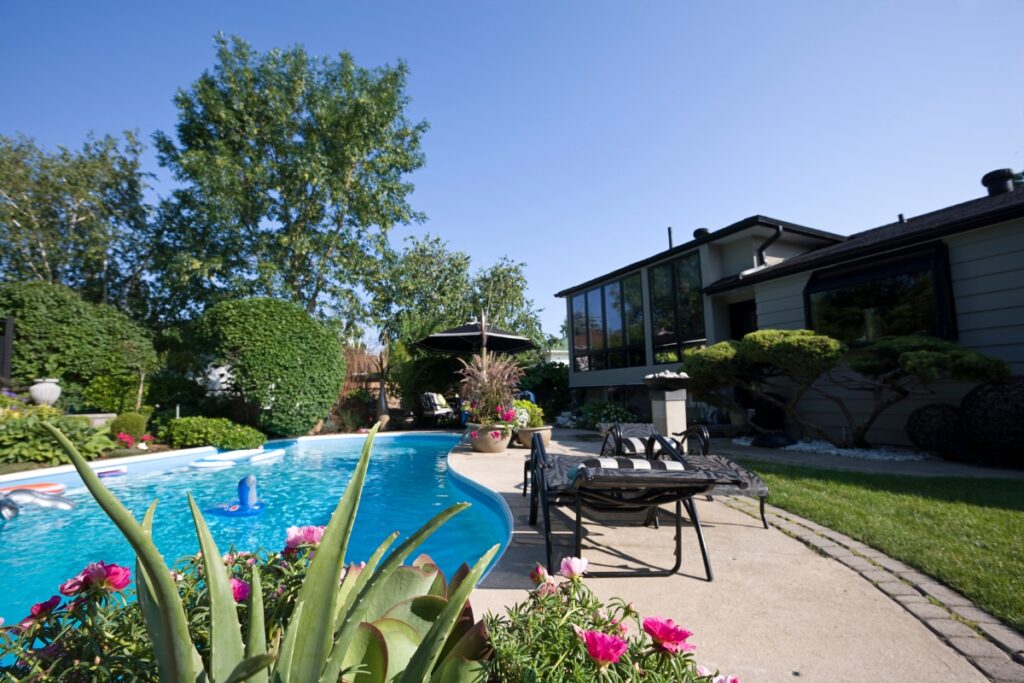
When it comes to poolside gardening, ensuring your plants thrive requires careful attention to seasonal considerations and proper plant care techniques. By understanding the unique conditions of a poolside environment, you can transform your pool area into a lush paradise that enhances both the beauty and functionality of your outdoor space.
Seasonal Considerations:
Spring:
- As the weather warms up, consider planting vibrant flowers like marigolds or petunias to add a pop of color to your poolside garden.
- Prune any overgrown plants to encourage new growth and maintain a tidy appearance around the pool area.
Summer:
- Keep your plants well-watered, as the hot sun and pool evaporation can quickly dry out the soil.
- Add mulch around plants to help retain moisture and prevent weed growth, ensuring a healthy and vibrant garden throughout the summer months.
Fall:
- Consider planting fall-blooming perennials like asters or ornamental grasses to keep your poolside garden looking beautiful as the seasons change.
- Remove any fallen leaves from the pool area promptly to prevent clogging filters and maintain water clarity.
Winter:
- Protect sensitive plants from frost by covering them with burlap or bringing them indoors if possible.
- Use this time to plan and design your garden for the upcoming spring season, considering new plantings or layout adjustments.
Plant Care Tips:
Selecting Plants:
- Choose plants that are well-suited to the unique conditions of a poolside environment, such as those that can tolerate splashes of chlorinated water or strong sun exposure. Watering:
- Establish a regular watering schedule for your plants, ensuring they receive adequate moisture without becoming waterlogged.
- Consider installing a drip irrigation system to efficiently water your poolside garden while minimizing water waste.
Pruning and Maintenance:
- Regularly prune plants to promote healthy growth, remove dead or diseased foliage, and maintain an attractive appearance.
- Keep an eye out for pests and diseases, addressing any issues promptly to prevent them from spreading to other plants.
By incorporating these seasonal considerations and plant care tips into your poolside gardening routine, you can create a thriving and beautiful oasis that enhances the overall ambiance of your outdoor space. Experiment with different plant varieties, colors, and textures to customize your pool area and enjoy a stunning landscape throughout the year.
Maximizing Space with Vertical Gardening
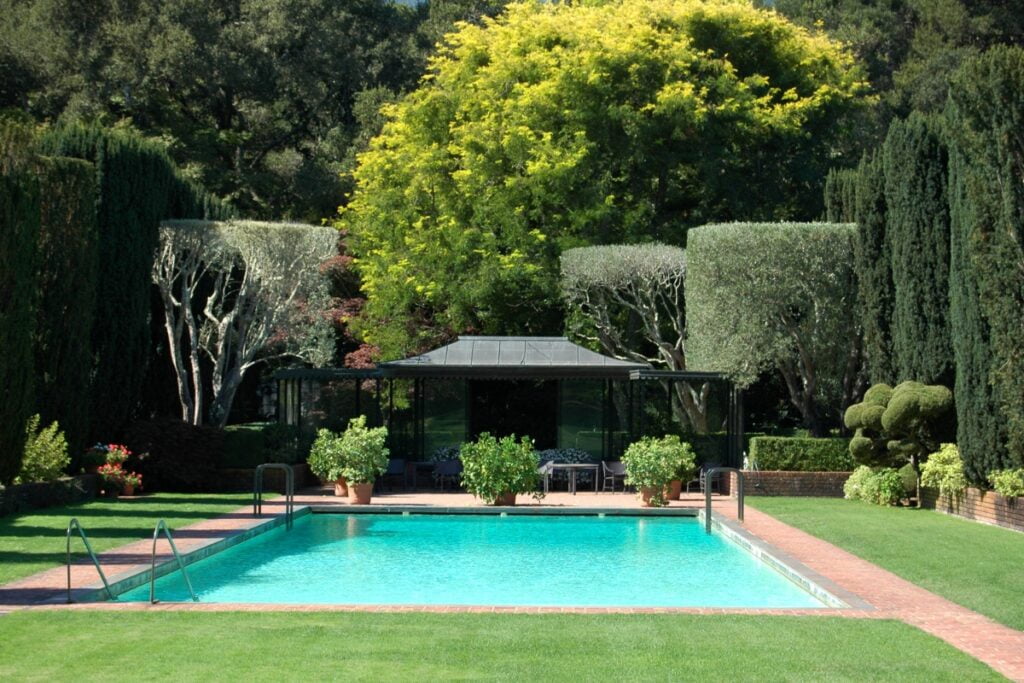
When it comes to poolside gardening, incorporating vertical gardening techniques can be a game-changer. Maximizing space with vertical gardening allows you to create a lush paradise even in limited areas. By utilizing walls, fences, or trellises, you can elevate your pool area’s aesthetics while optimizing space for a variety of plants.
Vertical gardening not only adds a touch of greenery but also enhances privacy and creates a refreshing ambiance. With poolside gardening as the focus, vertical planters can be strategically placed to frame the pool area beautifully. Vines, hanging planters, and wall-mounted pots can be used to add layers of colors and textures, transforming the space into a serene oasis.
One of the key benefits of vertical gardening in a poolside setting is the ability to grow a diverse range of plants without encroaching on precious floor space. Cascading foliage, aromatic herbs, vibrant flowers, and even small fruiting plants can thrive harmoniously in vertical planters, offering a visual feast for the eyes while maximizing the use of available space.
Incorporating a mix of trailing plants like ivy or bougainvillea with compact herbs such as basil and mint not only adds visual interest but also fills the air with delightful scents. By selecting plants that suit the local climate and sun exposure, you can create a sustainable and low-maintenance vertical garden that flourishes throughout the seasons.
Furthermore, vertical gardening alongside a pool area can act as a natural screen, providing both shade and privacy for a more intimate and relaxing environment. Consider incorporating trellises with climbing roses or installing tall grasses to demarcate the space and create a sense of seclusion.
To enhance the overall appeal of your poolside vertical garden, mix and match plant varieties, play with different heights and textures, and consider adding decorative elements such as fairy lights or water features. By combining creativity with practicality, you can maximize space with vertical gardening and transform your pool area into a verdant paradise that captivates the senses.
Wrapping Up: Your Personal Paradise Awaits
Poolside gardening offers endless possibilities for transforming your pool area into a lush paradise. Dive into the world of poolside gardening and turn your pool area into a tropical retreat that will transport you to paradise every time you step outside.
Transform your pool area into a lush paradise with expert pool services from Clear Water Pools Atlanta. Our team specializes in building and designing pools that enhance the beauty and functionality of your landscaping. Contact us today at 770-406-8638 or request an estimate and start planning your dream poolside garden. Let Clear Water Pools Atlanta help you create a stunning oasis right in your backyard.


